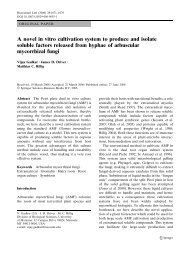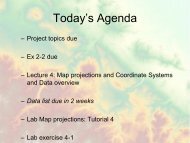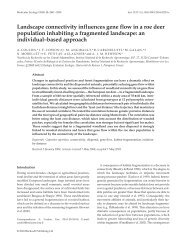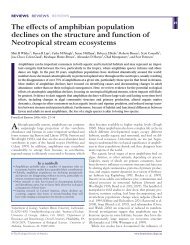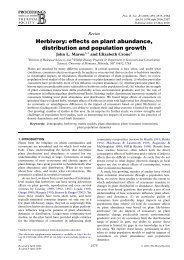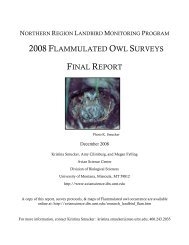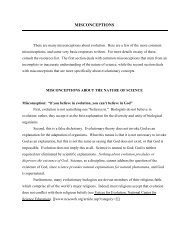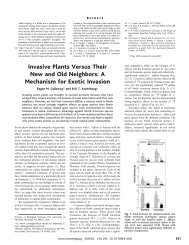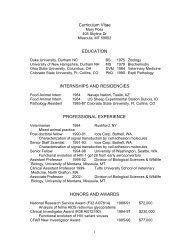Evolution of Antibiotic Resistance-Printable Format - Teach ...
Evolution of Antibiotic Resistance-Printable Format - Teach ...
Evolution of Antibiotic Resistance-Printable Format - Teach ...
Create successful ePaper yourself
Turn your PDF publications into a flip-book with our unique Google optimized e-Paper software.
Part III. Investigate Reason for Problem 1<br />
Activity C) What is <strong>Resistance</strong> to <strong>Antibiotic</strong>s?—<strong>Teach</strong>er’s Guide<br />
Overview: After students are familiar with key evolutionary concepts, make the connection<br />
between these concepts and resistance to antibiotics.<br />
Learning Objectives: 1) Students will understand that bacterial populations evolve resistance<br />
to antibiotics. 2) Students will understand that mutations for resistance that occur in<br />
the presence <strong>of</strong> an antibiotic will have a selective advantage, leave more <strong>of</strong>fspring, and<br />
thus increase in number in the population. 3) Students will understand that scientific<br />
claims are based on carefully collected evidence.<br />
Class Time: 1 day<br />
Day 4: Have students get together in small groups and discuss questions from<br />
worksheet; end with a full class wrap-up on what exactly is resistance to antibiotics (an<br />
evolutionary response by bacteria).<br />
Background Information: “ What is <strong>Resistance</strong> to <strong>Antibiotic</strong>s?”<br />
In this exercise, students are challenged to apply the evolutionary concepts they have<br />
learned to the practical problem they are faced with: antibiotic resistance. The objective is<br />
to understand what bacterial resistance is (evolution <strong>of</strong> bacterial populations) and what it is<br />
not (the development <strong>of</strong> tolerance by individual bacteria or people).<br />
Have students work in pairs or small groups (<strong>of</strong> 3 – 4). Armed with their research on<br />
antibiotics and disease (Part I) and their new knowledge about evolutionary concepts (Part<br />
II), have them work through the worksheet together. Use the points for discussion with<br />
individual groups, or as a full-class wrap-up to assess student understanding <strong>of</strong> the key<br />
concepts.<br />
Answers to student questions:<br />
Question 2: These data rule out hypothesis A, since they provide evidence that the bacteria<br />
have changed (the person has not changed).<br />
Question 3: These data support hypothesis C, but do not rule out hypothesis B, since more<br />
and more <strong>of</strong> the population could be developing a tolerance for the drug.<br />
Question 4: These data support hypothesis C, and rule out hypothesis B, since there is<br />
evidence <strong>of</strong> a genetic difference between the susceptible and resistant bacteria. The<br />
population has clearly evolved: most likely, a mutation occurred in a gene affecting the<br />
target site <strong>of</strong> the antibiotic, and since the population was in the presence <strong>of</strong> the antibiotic, this<br />
mutant was selected for and increased in the population.<br />
Points for discussion:<br />
? make sure students understand that a mutation occurred, and since it was advantageous<br />
in the presence <strong>of</strong> the antibiotic (it was not killed by the antibiotic), it had a reproductive<br />
advantage, and thus increased in the population.



